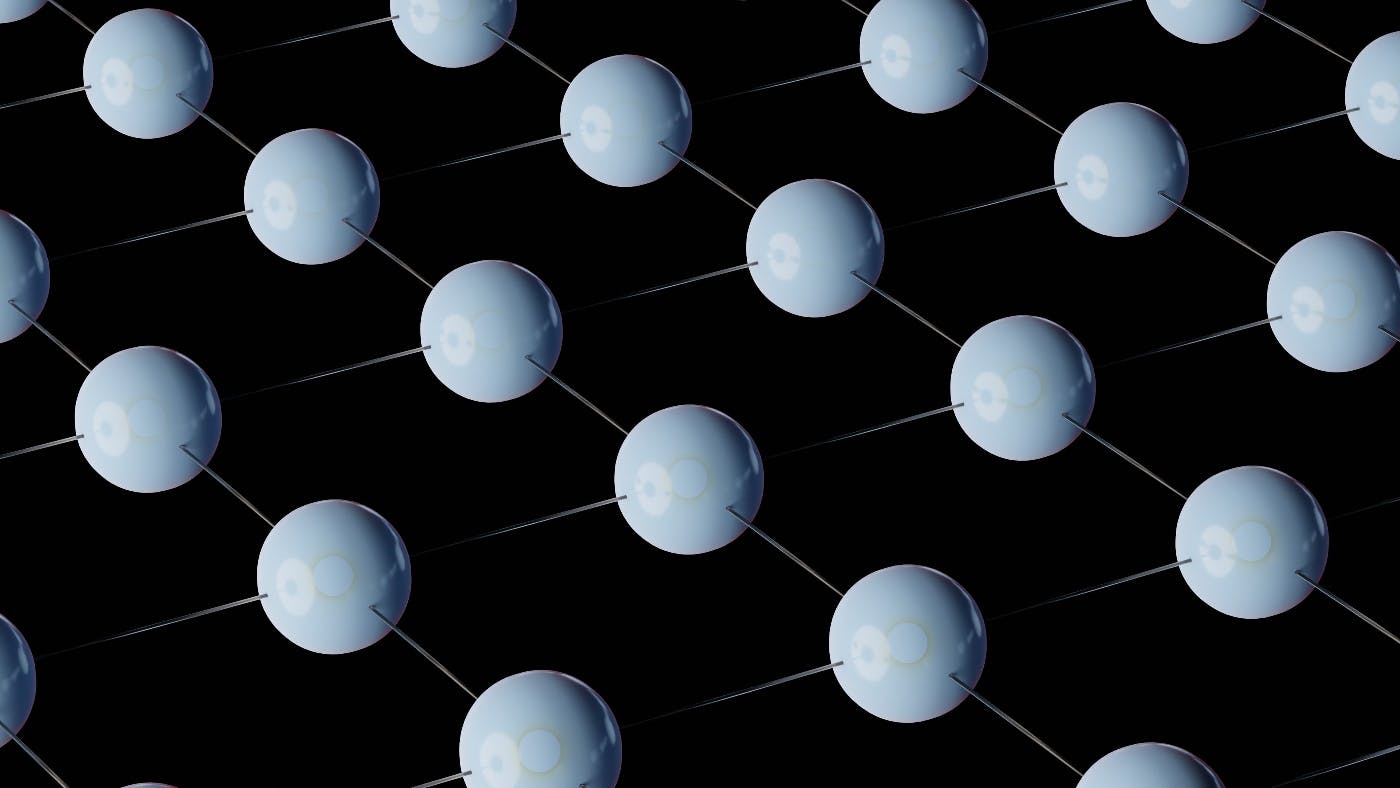
Let’s get something straight, Web3 is all about power, getting it back into the hands of the people, and putting the internet overlords in the rearview.
Let’s get something straight, Web3 is all about power, getting it back into the hands of the people and putting the internet overlords in the rearview.
That’s the voiceover for the film Web3, “In a world where free speech and ecommerce are held in the iron grip of (pick one) Amazon, Google. Twitter, Facebook, and a group of plucky engineers are fighting to put the power back in the hands of the people. If they succeed, the world as we know it is about to change.”
Then there would be an explosion, and all the lights in all the cities worldwide would go out.
Side note: Have you ever noticed in the movies when lights go out, there is a clunking sound like someone has thrown a huge, sci-fi-style giant switch? I don’t know about you, but usually, when I turn the lights off, it’s pretty quiet.
Web3 will change the world!!!
But …will it?
The Webs 1 & 2
Let’s jump back to the dawn of the 1990s and the advent of Web 1. The idea behind Web 1 was a way to democratize access to information. It was a grand idea, and many people believed this was the start of the revolution.
Like most revolutions, it took a lot of work in their nascent stages to navigate through the terrain, and there was a great deal of disorganization, and it was overwhelming. But it was the start of something, a global network representing the future of digital communication.
Web 1 was more about websites joined by hyperlinks; experts call it the ‘read only’ version of the internet, it was not very interactive, and the web user was, for the most part, passive.
Now, Web 2 is the web we know and love today. It is much more interactive; it is the read-and-write version of the web. Our current web offers multiple opportunities for interaction, collaboration, functionality, and user-generated content.
Web 2 is a giant leap forward. With Hypertext Transfer Protocol (HTTP) and many other inventions, web 2 acts as a social platform. Now, users can add comments, suggest pages, like, dislike, review, and create social media accounts with much-improved levels of interaction.
Web 2 also gave us myriad marketing capabilities, including blogs and Google ads. The step from Web 1 to Web 2 was enormous. Now we have an active, interactive life online.
So, you're asking if I can buy stuff online, watch things, comment, post, share, and all that; what is the need for web3?
That’s a good question.
Taking the Power Back
Web2 is glorious and, as we said, a giant leap forward from the read-only life we had on web 1. So, what’s with Web3?
When web 2 came into being, corporations like Amazon, Google, Twitter, and Facebook paved the way for better communication. They also brought some order to the internet and made it easier to connect and transact online. It was a significant step forward.
The deal here is that giant corporations, or some billionaires, seem to have too much control for some people’s liking.
Web3 is about taking back power from a few people and corporations and putting it back into the hands of the users.
The Power of a few

The general complaint, especially among designers and artists, including reviewers, bloggers, et al., is that these few giant corporations have succeeded because of what has been contributed to them by these users. They have nothing to show for it. A handful of people, and corporations, are making money, while the rest go unnoticed.
With Web3, we are looking at an iteration where markets, social media sites, and search engines can crop up and not be under the thumb of some kind of internet evil overlord. The power belongs to the people.
Web3 is a decentralized experience built on the blockchain, which already exists and undergirds cryptocurrencies like Bitcoin. The technology is there; it has been tried and tested, and now the idea is to couple the blockchain with the web.
Once the web is decentralized on Web3, the overlords are out of the picture, and users have the power. In the Web3 world, users control their data and can move seamlessly from social media sites, email, and shopping using a singular personalized account. A record is kept on the blockchain of all the activity.
Is it too confusing
When technology advances, there is usually a period of adjustment. There is always fear, mainly from people thinking they will be left behind. Blockchain technology, in particular, has people scratching their heads and feeling left in the rearview mirror.
But consider this, when you flip a light switch, your lights come on (silently). You don’t have to have an in-depth understanding of how electricity works to reap its benefits. The same is true for blockchain; you don’t have to fully understand the mechanics of it to get the benefits. Honestly, do you read the directions on any electronics you buy? Probably not. So, do you know how Web2 works?
To some extent, yes, but you don't need to know the full breadth of Web2 to function well using it.
Web3 Speaks, People Listen
It is confusing, and yet, companies, big tech, and money people are all perking up their ears at the mention of Web3.
A primary driver behind Web3 is the rise of NFTs or Non-Fungible Tokens. These digital collectibles and other online files can be bought with cryptocurrency.
Experts agree that defining Web3 is a bit of a struggle, and the definition adjusts with whoever is defining it. But this is the case with all new technologies that bring us to the frontier of change.
This new frontier is quickly evolving and has gone from the theoretical front to an active, living entity making waves at technology seminars and social media conventions. It’s forcing many companies to create Web3 divisions or at least try.
Even if Web3 is still in the nascent stages and new things are crawling from its primordial ooze daily, it is still proliferating, and its potential seems limitless.
Enthusiasm Abounds

Any new technology comes with its share of dreams, hopes, and enthusiasm. Most of us are still awaiting our flying cars so we can live that Jetsons dream.
In the Web3 dream, people can share photos, communicate with friends, shop, comment, and review without having to interact with big tech companies. The Web3 dream sees a multitude of smaller companies competing on the blockchain.
With Web3, you receive a token for your contribution when you post a message. This gives users an ownership stake in the platform and, someday, a way to cash in. And this allows users to avoid fees, rules, and the strictures of major tech companies. The irony is major tech companies are very interested in Web3.
One Web to Rule Then All … Maybe Not
If you’re hoping that this new iteration of the Web will be the uniting factor and will put an end to the tech giants, you need to put away your proletariat dreams. At least for a bit.
With all the current problems surrounding cryptocurrency, the blockchain doesn’t seem as infallible as once thought. The $8bn FTX crypto scandal has people wondering about the safety of the blockchain and if this is just another way to control the masses while putting all the wealth and power in the hands of those who know how to game the system.
Sam Bankman-Fried was supposed to be the hero; he was what we thought a crypto billionaire should be. He was accumulating vast sums to do more good in the world. He was building this glorious castle of altruism, and he was the crytpoprolitariat we all had been waiting for. Sadly, his castle had walls of sand, and his motivations were not as knight in shining armor as we had hoped.
This latest scandal is sending waves of worry through the system, and people are still looking at Web3 a bit askance. Congress is looking closer, and the whole platform and crypto are getting a second look. But that doesn't mean it’s going away or that Web3 is just a passing fancy, a buzzword that will never gain traction.
There are too many possibilities that come with Web3, and the drive to get the people more control and power over their online lives is vital, so no, Web3 has not been killed in the cradle.
With that said, the most likely scenario is that Web3 works alongside, as a companion to Web2, but it will never entirely supplant the current technology.
According to techno experts, the idea that we could see Amazon, Twitter, Facebook, or Google knocked out of existence is not a reality. They have too much power, they are the established norm, and people, for the most part, are in harmony with them. So, Web3 will not be the one web to unite them all. More like a noble warrior leading the party into new worlds.
It’s a Wild Place; You Need a Guide

As we said, Web3 offers so many possibilities beyond just getting power decentralized. There are new markets to explore, new ways of communicating, and new frontiers that still have virgin snow on the ground waiting to be occupied. There is too much going on for it not to keep going on.
If you’re interested, champing at the bit to get in and see what you can do, don’t go it alone. It’s a new technology, and that means bugs and missteps abound. You’ll want someone to show you the best possibilities for your company and goals. It’s easy to get lost and confused, so be careful.
If you think Web3 is a place you need to be marketing, talk to the experts at ThoughtLab. They understand this new technology and can help you take advantage far beyond the NFTs and crypto. There is more to explore, and ThoughtLab is the perfect guide for your exploration.
Contact ThoughtLab for a free estimate and let them help you see further, see into the future of this new and exciting technology.

